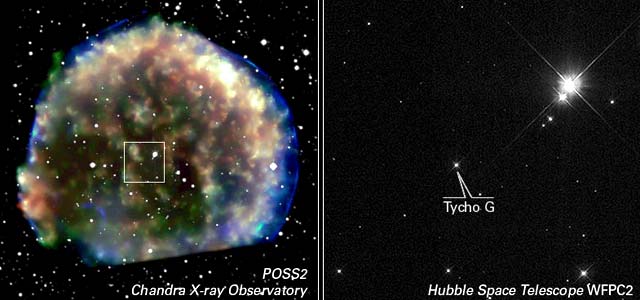This expedition has reached it's conclusion
List of mission participants: https://docs.google.com/spreadsheets/d/1RpTFEi8lrzwRKpXlHEyvAMDUwNTX72im8_GXMIcojb8/edit?usp=sharing
Spreadsheet for the Tycho G hunt is here: https://docs.google.com/spreadsheets/d/1N9ct5I-9BCLba7HWwoxUS55IBs9m0EUmtCxyYiMNb2I/edit?usp=sharing
Spreadsheet for the Cassiopeia A hunt is here: https://docs.google.com/spreadsheets/d/14wG1212bBiKt-BKrlb3sPDQ7DtKLRPoZj_akp9gj5qM/edit?usp=sharing
Welcome to the launchpad
for the
CASSIOPEIA PROJECT

Mission Description
[video=youtube_share;Oz5htf-ntMc]https://youtu.be/Oz5htf-ntMc[/video]
Final Debriefing
[video=youtube_share;UNJiuHfnP1M]https://youtu.be/UNJiuHfnP1M[/video]
for the
CASSIOPEIA PROJECT

Mission Description
[video=youtube_share;Oz5htf-ntMc]https://youtu.be/Oz5htf-ntMc[/video]
Final Debriefing
[video=youtube_share;UNJiuHfnP1M]https://youtu.be/UNJiuHfnP1M[/video]
It is the year 3302. Mankind is actively exploring the galaxy like never before. This new era of exploration has given us a peek into some of the mysteries of the galaxy as we've encountered object and artifacts in space that, so far, have defied explanation.
Together we've embarked on expeditions to the far side of the galaxy. We've explored the massive blackhole that occupied the center of the Milky Way. We are now engaged in the colonization of a new region of space thousands of kilo-parsecs from mankind's birthplace. We are becoming a galactic civilization.
Many explorers have dedicated themselves to visiting first-hand stars that were first discovered by Earth's early astronomers in the ancient past. The goal of the Cassiopeia Project is to find, visit and thoroughly map two of the most famous astronomical object from our ancient past.
We are on a mission to discover the current locations Tycho's Star and Cassiopeia A, two supernova remnants that should be found in the constellation of Cassiopeia but have elluded our discovery.
--------------------------------------------
Cassiopeia A
Cas A, as it is known, is one of the strongest radio signals sources in the galaxy detectible from Earth.
Many believe that astronomer John Flamsteed observed the light of the Cassiopeia A supernova in 1680AD though this is widely disputed. What is known is that when NASA's Chandra X-Ray Observatory observed the supernova remnant in 1999AD it discovered a "hot point" at the center of the nebula that is likely a neutron star or black hole.

--------------------------------------------
Tycho's Supernova
Universal Cartographics does have and entry for "Tycho" in it's interstellar database but a quick search of the galaxy map will show this system in the line of stars near the Orion Nebula. This cannot be the object described so thoroughly by Tycho Brahe in 1572AD.
Finding Tycho's supernova may prove to be more difficult then finding Cassiopeia A as there is no neutron star or black hole remnant, just the expanding nebula and a companion star fleeing the heart of the explosion at a velocity of four times the speed of other stars in it's vicinity.
To find Tycho's supernova we will be looking for this companion star, Tycho G.

---------------------------------------------
Mission details, departure times and way points will follow. The mission is expected to commence during the first week of November 3302 in an effort to wrap things up before the beginning of the new year.
---------------------------------------------
Together we've embarked on expeditions to the far side of the galaxy. We've explored the massive blackhole that occupied the center of the Milky Way. We are now engaged in the colonization of a new region of space thousands of kilo-parsecs from mankind's birthplace. We are becoming a galactic civilization.
Many explorers have dedicated themselves to visiting first-hand stars that were first discovered by Earth's early astronomers in the ancient past. The goal of the Cassiopeia Project is to find, visit and thoroughly map two of the most famous astronomical object from our ancient past.
We are on a mission to discover the current locations Tycho's Star and Cassiopeia A, two supernova remnants that should be found in the constellation of Cassiopeia but have elluded our discovery.
--------------------------------------------
Cassiopeia A
Cas A, as it is known, is one of the strongest radio signals sources in the galaxy detectible from Earth.
[video=youtube_share;r9VOCFofR7A]https://youtu.be/r9VOCFofR7A[/video]
Many believe that astronomer John Flamsteed observed the light of the Cassiopeia A supernova in 1680AD though this is widely disputed. What is known is that when NASA's Chandra X-Ray Observatory observed the supernova remnant in 1999AD it discovered a "hot point" at the center of the nebula that is likely a neutron star or black hole.

--------------------------------------------
Tycho's Supernova
Universal Cartographics does have and entry for "Tycho" in it's interstellar database but a quick search of the galaxy map will show this system in the line of stars near the Orion Nebula. This cannot be the object described so thoroughly by Tycho Brahe in 1572AD.
Finding Tycho's supernova may prove to be more difficult then finding Cassiopeia A as there is no neutron star or black hole remnant, just the expanding nebula and a companion star fleeing the heart of the explosion at a velocity of four times the speed of other stars in it's vicinity.
[video=youtube_share;t_-nkS3MdXI]https://youtu.be/t_-nkS3MdXI[/video]
To find Tycho's supernova we will be looking for this companion star, Tycho G.

---------------------------------------------
Mission details, departure times and way points will follow. The mission is expected to commence during the first week of November 3302 in an effort to wrap things up before the beginning of the new year.
---------------------------------------------
The mission announcement was entered into the galactic record on 14 OCT 3302 via Galnet News:
https://community.elitedangerous.com/galnet/uid/57fe5cfc9657ba67413e605c
Freelance Report: The Cassiopeia Expedition
14 OCT 3302
The Earth Expeditionary Fleet has announced plans to mount a bold expedition beyond the Perseus Arm to find two stellar objects in the Cassiopeia constellation first noted by Earth astronomers in the distant past.
"The Cassiopeia Project differs from other expeditions," said Commander Finn McMillan. "We will attempt to locate two supernova remnants, which have yet to be found despite numerous attempts from independent explorers. Our targets are Cassiopeia A and Tycho's star."
"This is not space tourism. The expedition to Cassiopeia A will take us into an area of space referred to as the Formidine Rift, which before the advent of the frame shift drive, had a reputation as a kind of Bermuda Triangle. Few who venture into the Rift return to tell the tale."
The expedition is expected to depart from Chi Orionis in the first week of November 3302.
Last edited:

